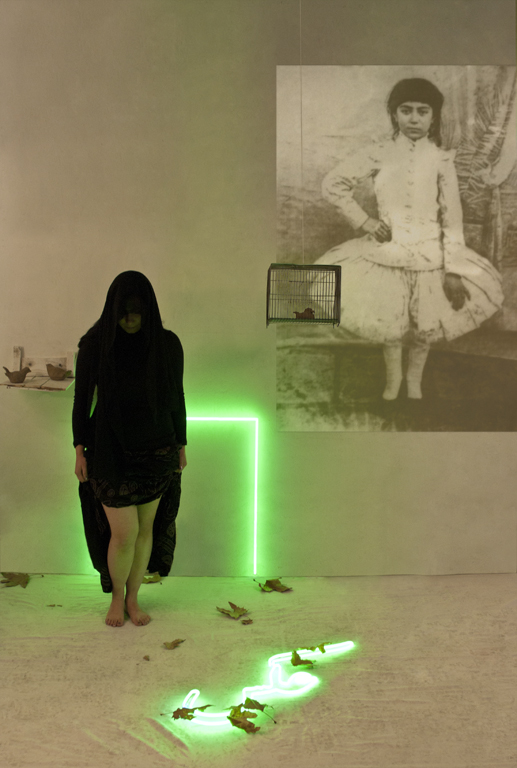Assistant Professor, History and Theory of Art
University of Ottawa, Canada

Arman Stepanian’s recent photographic artworks engage in a playful, intercultural dialogue with historic Western paintings, the history of Iranian photography, and with contemporary art. Stepanian’s eclectic love of the history of European paintings (by Toulouse-Lautrec, Modigliani, and Goya) as well as his celebration of Persian carpets and miniatures, resonates cross-culturally. His Qajar-era photographs also punctuate the backgrounds of all his recent series, including “New Art” and “The Secret Meaning of Photography in Iran.” Stepanian’s work can be situated within the international paradigm of performative photography, despite not using his own body or face as a model as do Yasumasa Morimura, Cindy Sherman, and Shirin Neshat. Thus his white studio tableaux that re-stage familiar moments from a hybrid mix of visual cultures, past and present, connect in a closer way to his Iranian peers Shadi Ghadirian and Peyman Houshmanzadeh.
A cat and mouse game of transgressions involving an interfaith iconography of the sacred and the profane inches along by degrees of exposed skin. Stepanian re-visits Caravaggio’s The Death of the Virgin, an early Baroque painting, in its own time a scandal, rejected by the very same Church fathers who commissioned it, on the grounds that the dead saint looked unholy like the pale, bloated corpse of a prostitute dragged up from the Tiber River. Thus Christian and Muslim cultures converge ironically through a series of provocatively posed women more or less veiled by the photographic emulsion itself or by the colorful distance of artifice.
His works can be read as visual puzzles or signs to be deciphered; they present mysteries composed of iconic fragments that suspend easy narrative resolution. Stepanian’s signature can nonetheless be read in his aesthetic elegance, his persistent celebration of classically-packaged female beauty, and his coyly idiosyncratic sense of humour. In North America a green light means ‘go;’ Stepanian spells out ‘photography’ in green neon calligraphy (‘aks’ in Farsi) at a time when photography in and of itself is again so important while also being seriously challenged in the Islamic Republic of Iran.
info@armanstepanian.com
+989362835579
©Artizen Web All Rights Reserved.